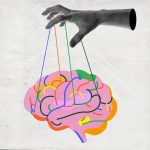Differentiate Instruction:
It is important to recognize that students have a range of learning needs and styles. Modify your lesson to meet the individual needs of your students, such as using different levels of difficulty, providing additional support, or incorporating different learning modalities – by regularly assessing your student’s understanding of the material throughout the lesson. This will help you adjust your teaching to meet their needs. Formative assessment can take many forms, such as observation, questioning, and discussion.
Close the lesson by reviewing key concepts and providing an opportunity for students to reflect on what they have learned. This will help reinforce the learning and connect new information to students’ prior knowledge.
Reflect on the Lesson:
After the lesson, take time to reflect on what went well and what could be improved. This will help you refine your lesson for future teaching. Use the feedback you receive from your students and your reflections on the lesson to continuously improve your teaching and your lesson planning.
By following these steps, there is more opportunity to create successful lesson plans that engage your students, that meet their individual needs, and that can effectively teach important concepts and skills. Remember that effective lesson planning is an ongoing process and requires constant reflection and refinement.
Start with Clear Learning Objectives:
Learning objectives are statements that describe what students should know and be able to do by the end of the lesson. Clear and specific learning objectives help you focus on what you want your students to learn and make it easier to design activities that will help them achieve those objectives.
Choose Engaging and Relevant Activities:
Engaging and relevant activities can help students stay motivated and interested in the lesson. Consider using a variety of activities, such as hands-on activities, group work, and technology-based activities, to keep your students engaged and motivated.
Differentiate Instruction:
Differentiating instruction will help to modify a lesson to meet the individual needs of your students. This might involve using different levels of difficulty, providing additional support, or incorporating different learning modalities as well as recognizing that students have different learning needs and styles.
Build in Formative Assessment:
Formative assessment is the process of regularly assessing your student’s understanding of the material throughout the lesson. This helps you adjust your teaching to meet their needs. Formative assessment can take many forms, such as observation, questioning, and discussion. By building in formative assessment, you can identify areas where your students may be struggling and adjust your teaching to better meet their needs.

Include Closure:
Closure is an important part of the lesson where you review the key concepts and provide an opportunity for students to reflect on what they have learned. This will help students connect the new information to their prior knowledge. Closure can take many forms, such as a summary of key points, a reflection activity, or a discussion. A study by the University of Pittsburgh found that providing closure at the end of a lesson can help students better retain the information they learned and apply it in new contexts.
Reflect on the Lesson:
After the lesson, take time to reflect on what went well and what could be improved. This will help you refine your lesson for future teaching. Reflecting on the lesson can help you identify areas where your teaching was effective and areas where you may need to make adjustments.
Continuous Improvement:
Effective lesson planning is an ongoing process that requires continuous improvement. Use the feedback you receive from your students and your reflections on the lesson to continuously improve your teaching and your lesson planning. This may involve adjusting your activities, modifying your teaching style, or incorporating new technologies or resources.
By following these steps, you can create successful lesson plans that engage your students, meet their individual needs, and effectively teach important concepts and skills. Effective lesson planning requires careful thought and attention to detail, but the rewards are well worth the effort.









